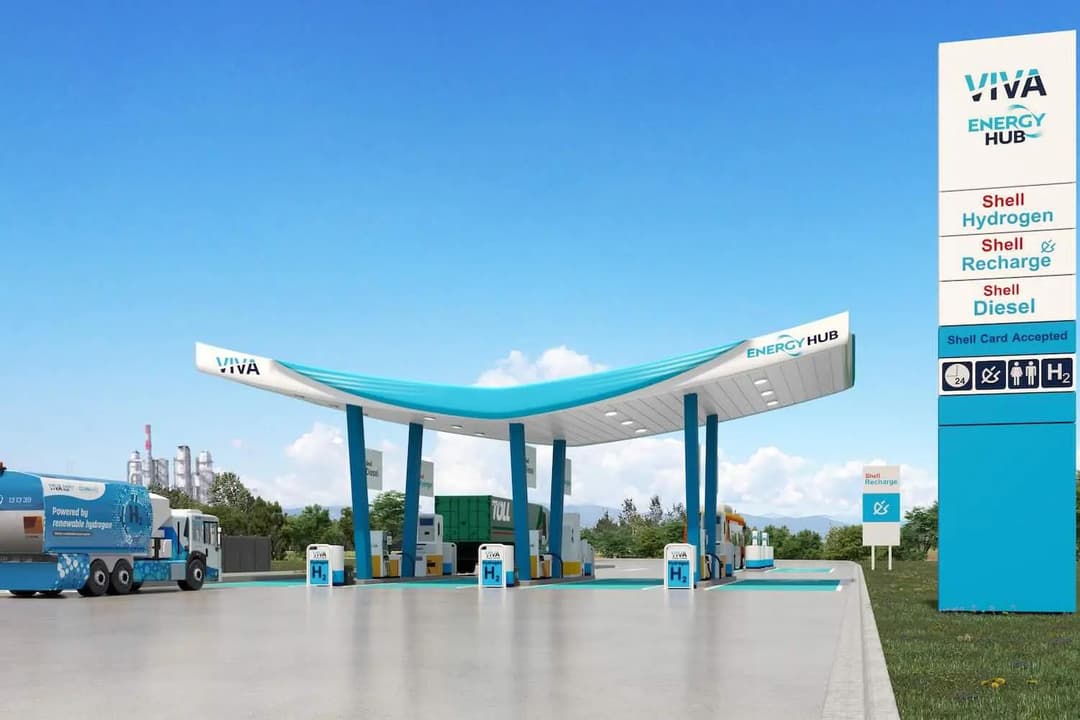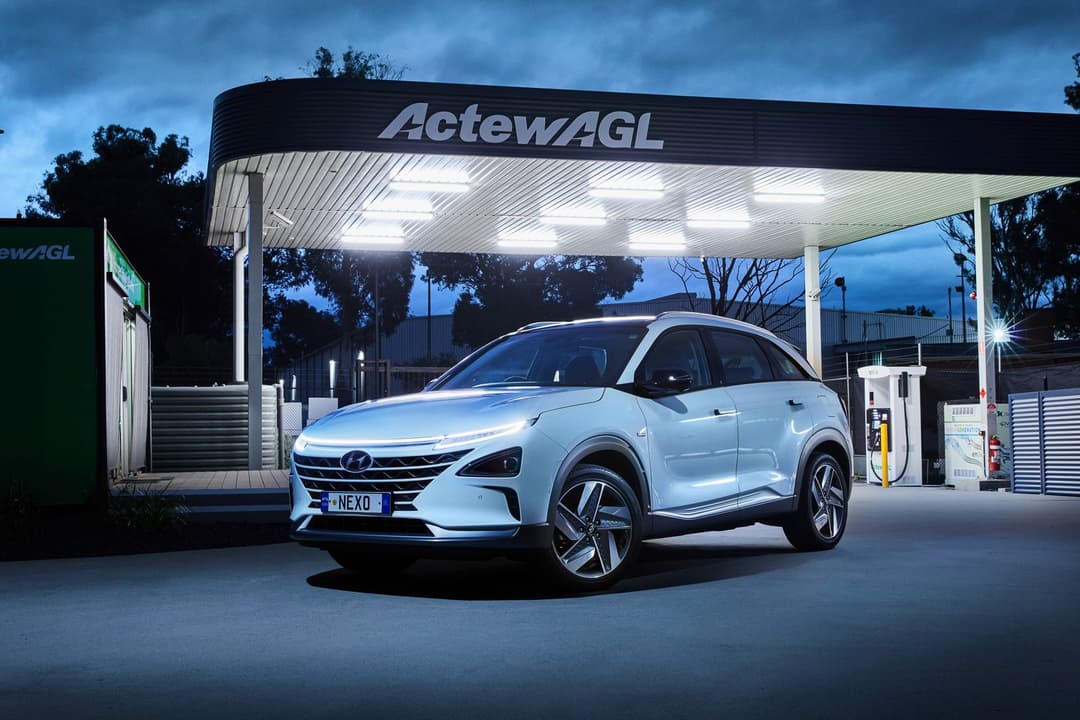Viva Energy has officially opened a new hydrogen refuelling station in Geelong, Victoria, located at one of the country’s few remaining oil and gas refineries. The station, named the New Energies Service Station, is being called Australia's first publicly accessible commercial hydrogen refuelling facility.
The project is powered by a 2.5-megawatt proton exchange membrane (PEM) electrolyser, sourced from Norwegian company Nel Hydrogen. This electrolyser uses electricity from the grid and water supplied by Barwon Water to produce hydrogen fuel on-site.
Viva Energy says the new station will serve as a hub for zero-emission heavy vehicles operating across the Geelong region. According to the company, the facility is designed to reduce emissions from the freight and transport sector, an area where hydrogen fuel may offer long-range and fast-refuelling advantages over battery electric trucks.
▶️MORE: How to use a public EV charging station (step-by-step guide)

Built for Heavy-Duty Use
The hydrogen station is geared for high-capacity use. Viva says the system can produce up to 1,000 kilograms of hydrogen per day. It also claims the setup can dispense 300 kilograms in under two hours, with enough capacity to refuel 10 trucks in a row, similar to the refuelling time of diesel.
A company spokesperson said this daily production will more than meet expected demand in the near future. Viva also plans to supply hydrogen in bulk to businesses through tube trailers, offering another path for commercial operators looking to lower their carbon output.
▶️MORE: Electric Car Home Charging: A Comprehensive Guide
So far, four partner companies have signed on to use the facility. These include:
- Toll Group (freight)
- ComfortDelGro Corporation Australia (passenger transport)
- Cleanaway (waste management)
- Barwon Water (utility partner)

Together, these companies will operate seven hydrogen-powered fuel cell vehicles in the early phase. Viva Energy also plans to put up to 15 of its own hydrogen-powered trucks on the road over the next two years.
The project received support from both federal and state governments. ARENA committed $22.8 million in funding, while the Victorian Government contributed an additional $1 million through its Renewable Hydrogen Commercialisation Pathways Fund.
At the launch event, Victoria’s Energy Minister Lily D’Ambrosio said the station reflects the state’s commitment to cutting transport emissions as part of its goal to reach net-zero by 2045.
▶️MORE: BYD Atto 3 Charging Guide: Charge times, speed and cost
Understanding Hydrogen Refuelling – Is It Truly Green?
Hydrogen is gaining attention as a fuel source for heavy transport. But what does “green hydrogen” really mean, and how sustainable is it?
Green hydrogen is produced through electrolysis: a process where electricity is used to split water into hydrogen and oxygen. If the electricity used comes from renewable sources like solar or wind, the hydrogen produced is considered green. This method results in no direct carbon emissions.
However, electrolysis requires a lot of electricity. To ensure the hydrogen is truly carbon-free, many developers use dedicated renewable energy sources on-site, often with battery storage, to power the process around the clock.
In Viva Energy’s case, the station uses electricity from the grid. While Viva says it purchases "sustainable electricity," grid electricity in Australia still includes a mix of coal, gas, and renewables. Because electricity from the grid is pooled, there’s no guarantee that all the energy used is actually coming from renewables. This makes it harder to classify the hydrogen as 100% green.
▶️MORE: Which Electric Cars Have Bidirectional Charging (V2L, V2G, V2H)?
Globally, over 95% of hydrogen is currently made using fossil fuels, a process known as steam methane reformation, which produces large amounts of CO₂. This type of hydrogen is referred to as grey hydrogen, and it remains the dominant form worldwide.
So, while Viva’s new station marks an important step for hydrogen in Australia, questions remain around how green the fuel really is when powered by a mixed grid. Still, the infrastructure and partnerships being built now could lay the groundwork for more sustainable hydrogen in the future, especially as the grid itself becomes greener.
Stay up to date with the latest EV news
- Get the latest news and update
- New EV model releases
- Get money savings-deal

Privacy policy